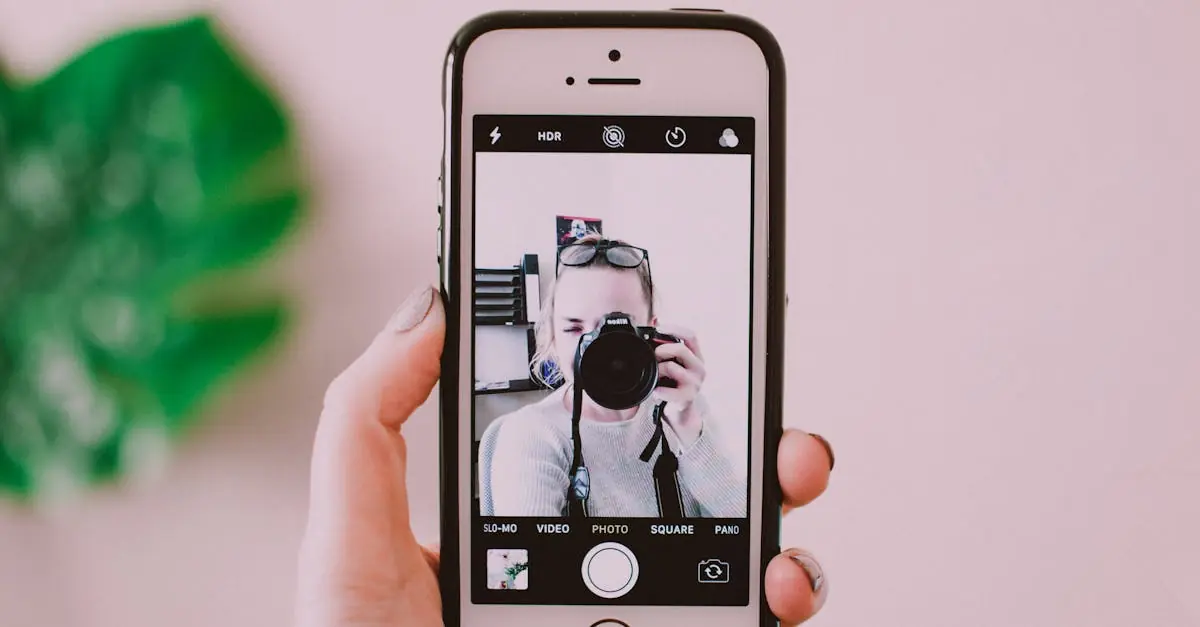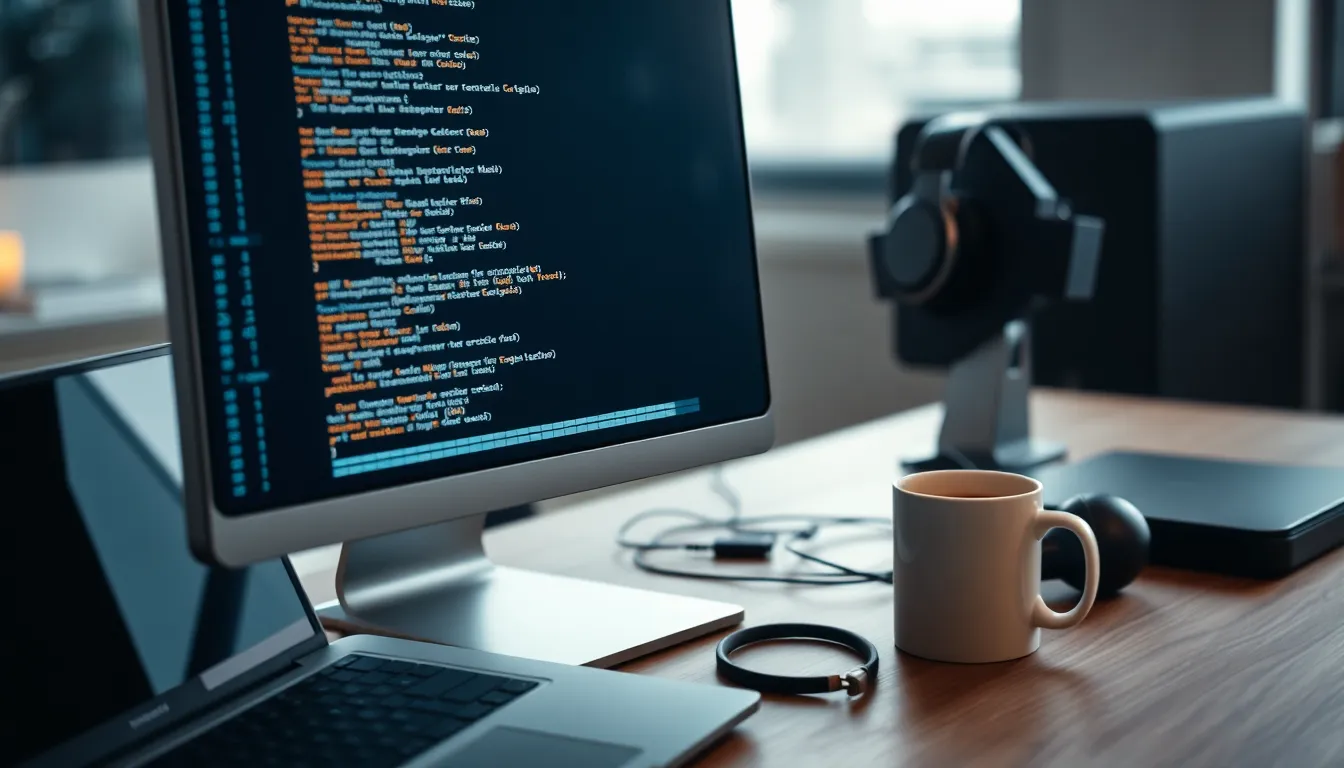Ever wanted to capture that epic gaming moment or share a hilarious video call with friends? Screen recording on an iPhone is the secret weapon you didn’t know you needed. With just a few taps, you can immortalize your screen and add your voice to the mix, making it a breeze to create tutorials, reactions, or simply document your digital adventures.
Table of Contents
ToggleOverview Of iPhone Screen Recording
Screen recording on an iPhone serves as a powerful tool for documenting activities on the device. Users capture everything from app interactions to gameplay seamlessly. Activating the screen recording feature is a straightforward process embedded within the device’s settings.
The iPhone allows users to record their screens with audio. When enabled, this feature captures microphone input alongside the screen content. Many creators utilize this capability to add commentary or narration to their recordings, enhancing the overall viewing experience.
Engaging tutorials often improve with the addition of voiceovers. Reasonably, users can guide viewers through complex processes in real-time. This synergy between visual and audio components makes the content more relatable and informative.
Adjusting screen recording settings is essential for optimal results. Users navigate to the Control Center where they can access screen recording features. Selecting the microphone icon ensures audio captures alongside the video.
Exporting recorded videos is equally effortless. The iPhone stores these recordings in the Photos app, making management convenient. Users can edit their videos, add music, or modify clips before sharing them on social media or other platforms.
Notifications during recording may interrupt an ongoing session. It’s advisable to enable Do Not Disturb mode before starting. Advisory practices like this create uninterrupted content for a polished final product.
Sharing recorded content presents various options. Users easily upload videos to platforms like YouTube or TikTok, expanding their reach. Moreover, these recordings can be sent via messaging apps to friends and colleagues, promoting collaboration and sharing.
Enabling Screen Recording On iPhone
Activating screen recording on an iPhone is essential for capturing content effectively. This process involves a few simple steps.
Accessing Control Center
Swiping down from the top-right corner of the screen opens the Control Center on most iPhone models. This feature provides quick access to various tools, including screen recording. Users with older devices can swipe up from the bottom edge instead. Locating the screen recording icon becomes straightforward once the Control Center is visible. Tapping this icon initiates the recording process, creating a seamless way to document digital experiences or share gameplay with others.
Adding Screen Recording Feature
Accessing the Settings app is the first step to adding the screen recording feature. Users should scroll down and select Control Center. Finding “Customize Controls” allows users to modify their Control Center layout. Users can add screen recording by tapping the plus sign next to it. Confirming the addition ensures the icon appears in the Control Center, making it readily available for future recordings. This setup empowers users to capture their screens efficiently and with clarity, enhancing their content creation capabilities.
Setting Up Microphone For Recording
Setting up the microphone for screen recording enhances audio quality. Users gain the ability to add clear commentary while capturing their screens.
Adjusting Microphone Settings
Access the Settings app to configure microphone settings. Navigate to Control Center and select Screen Recording. Ensure the microphone is enabled by tapping the microphone icon. When activated, a red microphone icon appears to confirm it’s on. Adjust volume levels by speaking into the microphone. Increased volume levels create a better recording experience.
Testing the Microphone
Test the microphone before starting a screen recording session. Open the Voice Memos app for quick testing. Record a brief audio message and play it back. This process ensures clarity in sound quality. If the voice is faint or unclear, make adjustments to positioning or settings. Check to ensure nothing obstructs the microphone. A brief test leads to improved recordings.
How To Screen Record With Mic On iPhone
Screen recording on an iPhone with microphone audio captures high-quality sound alongside visuals. This feature supports various content creation needs.
Starting The Screen Recording
To start, access the Control Center by swiping down from the top-right corner on newer models or up from the bottom on older ones. Locate the screen recording icon, which looks like a dot within a circle. Tapping this icon begins a three-second countdown, ensuring readiness. If microphone audio is required, press and hold the screen recording icon until a menu appears. Tap the microphone icon to enable it, ensuring the red indicator shows it’s active. After confirming microphone activation, initiate the recording by tapping “Start Recording.” Users can now capture gameplay, tutorials, or presentations seamlessly.
Stopping The Screen Recording
Stopping the recording is straightforward. Users can tap the red bar at the top of the screen, prompting a confirmation dialog. Alternatively, returning to the Control Center and tapping the screen recording icon stops the process immediately. Upon cessation, a notification will confirm that the recording has saved. Recorded videos automatically store in the Photos app, allowing for easy access and management. These videos can now be edited or shared directly from the Photos app, facilitating quick content distribution on social media platforms.
Tips For Best Recording Quality
Adjusting settings significantly enhances recording quality. Start by ensuring the microphone is enabled. This setting captures clear audio, making voiceovers more impactful.
Positioning plays a crucial role. Keep the iPhone close to the user to reduce background noise. Additionally, using a pop filter can help minimize unwanted sounds during recording.
Lighting also impacts video quality. Well-lit environments produce visually appealing recordings. Natural light works well, but soft artificial lighting can be effective, too.
Test recordings are essential. Before starting, create a short test video to check audio and video clarity. This practice helps identify any adjustments needed for an optimal setup.
Avoid background noise during recording sessions. Utilize Do Not Disturb mode to eliminate notifications and alerts that could interrupt the experience.
Practicing before the final recording improves confidence and flow. Creators can plan their commentary to ensure clarity and cohesiveness.
Editing recorded videos afterward can refine content quality. Using built-in editing tools in the Photos app allows users to cut unnecessary segments and add enhancements, resulting in polished final products.
Finally, when sharing videos, consider the target platform. Different platforms have varying specifications that impact quality. Adapting settings accordingly ensures the best presentation of content.
Screen recording with a microphone on an iPhone opens up a world of creative possibilities. Users can effortlessly capture their screens while adding personal commentary to enhance their content. This feature not only simplifies the process of creating tutorials or sharing memorable moments but also allows for easy editing and sharing across various platforms.
By following the outlined steps and tips, anyone can achieve high-quality recordings that stand out. With a bit of practice and attention to detail, screen recordings can become a valuable tool for communication and content creation. Embracing this feature can lead to more engaging and impactful digital interactions.






